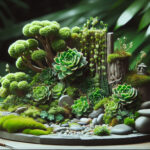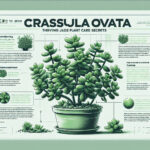Introduction to Crassula
Welcome to the enchanting world of Crassula, a succulent that has captured the hearts of green thumbs and decorating enthusiasts alike. Their thick, fleshy leaves, which range from glossy green to rich burgundy, are more than just a feast for the eyes; they tell a tale of resilience and adaption.
The name ‘Crassula’ itself derives from the Latin term ‘crassus,’ which means ‘thick’ or ‘fat,’ pointing directly to the succulent’s signature plump leaves. The linguistic roots of Crassula elegantly mirror the very essence of what makes these plants so distinct and desirable for a swath of plant lovers.
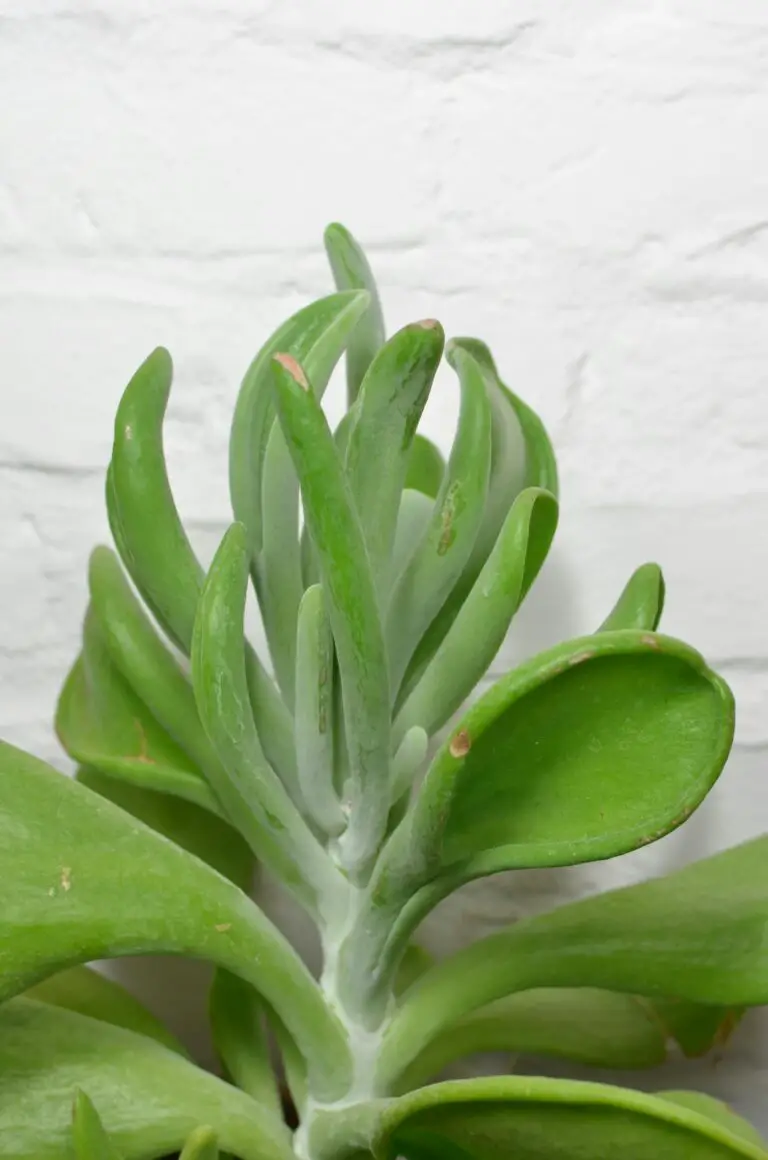
Their demand isn’t a surprise when you consider their versatility. From the stark shelves of a minimalist apartment to the vibrant nooks of a bohemian bungalow, Crassulas slide effortlessly into any scene. Interestingly, they are not just modern ornaments; these hardy plants bear a rich history and play a role in various cultural narratives all over the globe. In some traditions, they are seen as symbols of luck and prosperity, adding a layer of cultural significance to their botanical charm.
To grasp their widespread appeal, take a peek into any home garden, and you’re likely to spot a Crassula perched proudly amongst other foliage. They are a testament to the growth in the popularity of succulents, offering a combination of aesthetic allure and low maintenance care that’s hard to find elsewhere in the plant kingdom.
So, as we delve deeper into our exploration of Crassula, let’s appreciate not only their physical beauty but also the rich linguistic and cultural tapestry that makes up their story. Stay rooted, as we’re just scratching the surface of this succulent’s fascinating narrative.
Etymology of Crassula
Have you ever wondered where the Crassula, that robust little succulent on your windowsill, got its name from? Well, you’re in for an interesting story! The name ‘Crassula’ is derived from the Latin word ‘crassus,’ meaning ‘thick’ or ‘fat.’ This is a tip of the hat to the plant’s thick and fleshy leaves, which are a trademark of succulents. But there’s more to it than just a simple name-tag. Let’s delve into how this Latin root reflects not only the plant’s appearance but also its survival strategy.
Picture the Crassula in its natural habitat—rocky terrains, intense sunlight, and occasionally harsh conditions. Its name reflects its adeptness at thriving in such environments. The ‘thickness’ goes beyond the physical; it’s also about resilience. In botany, names often give clues to the plant’s characteristics or origins. For instance, compare Crassula to another succulent, ‘Sedum,’ which comes from ‘sedo,’ meaning ‘to sit.’ This illustrates how Sedum tends to sprawl across the ground where it sits, while Crassula stands ‘thick and proud,’ with stout leaves packed with water-saving superpowers.
Next time you brush your fingers against the plump leaves of a Crassula, remember you’re touching a survival specialist, whose very name is a nod to its strength and tenacity. The Crassula doesn’t just survive; it thrives, thanks to its ‘crassus’—or shall we say, its chunky assets! Such a name is not just a title; it’s a compact narrative of survival.
Curious to see a Crassula in action? Check out this video, where you can see how its ‘crassus’ characteristics come to life right before your eyes!
It’s fascinating how learning about the meaning behind a plant’s name can provide such insight into its personality and resilience. So, whenever you hear ‘Crassula,’ think of it as a testament to nature’s beautiful efficiency, condensed into one thick, succulent package.
Symbolism and Cultural Significance
In unraveling the mystique of the Crassula, we delve into its rich tapestry of symbolism that threads through various cultures. This plucky little succulent, commonly referred to as the ‘money plant,’ is not merely a statement of decor but an emblem of wealth and prosperity.
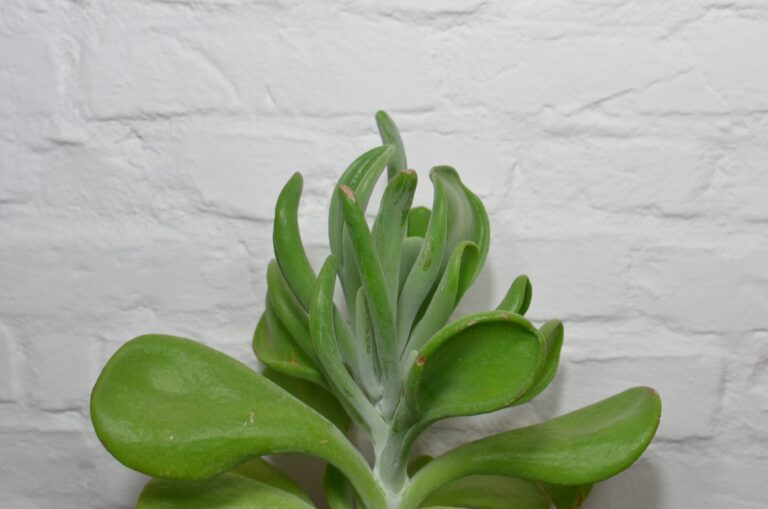
For many, the Crassula is a botanical talisman, believed to attract financial success and good fortune. In feng shui, it is strategically placed within homes and offices to foster a flow of positive energy, aligning occupants with the vibrations of abundance—a practice heartily embraced in Eastern cultures.
But the Crassula’s significance extends beyond its fortuitous charm. In South African tradition, where these succulents are native, they are often used in rituals, marking life’s important milestones from birth celebrations to weddings, symbolizing a wish for lasting vitality and growth for the participants.
Through the Crassula, we find a common thread weaving an understanding that prosperity extends past material wealth to encompass growth, vitality, and the flourishing of the human spirit—a true reflection of the plant’s resolute nature to thrive in even the most challenging of conditions.
Crassula Varieties and Their Meanings
Embark on a botanical journey through the world of Crassulas, where each succulent variety not only captivates with its resilient elegance but also carries a story as rich as the soil it springs from. In our exploration of these distinctive plants, we unveil the tapestry of meanings behind their names, each reflecting a unique attribute or a snippet from history.
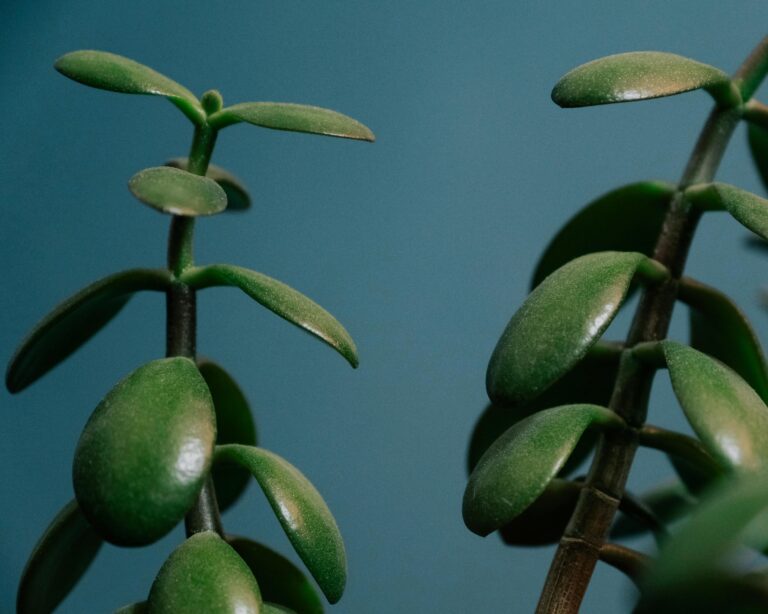
Crassula Ovata – The Jade Plant
Take for instance the ever-popular Crassula ovata, commonly known as the Jade Plant or Money Tree. This well-loved variety stands out with its thick, glossy leaves that embody wealth and prosperity in various cultures. Its robust form and lustrous foliage mirror the precious jade stone, symbolizing good luck and financial fortune. It’s no wonder that this Crassula is a staple in businesses and homes alike, silently promising abundance and success.
Crassula Arborescens – The Silver Dollar Plant
Similarly, the Crassula arborescens, dubbed the Silver Dollar Plant, boasts flat, round leaves resembling shimmering coins. A storyteller in its own right, this plant hints at tales of opulence and historic trade, its silver-toned leaves resonating with the color of currency. It’s not simply a plant; it’s a living nod to the bygone days when silver coins clinked in pockets and prosperity was measured in metallic sheen.
Crassula Perforata – String of Buttons
Contrast that with the Crassula perforata, affectionately called the String of Buttons. This dainty variety showcases tightly stacked leaves spiraling upwards like a collection of ornamental buttons sewn by Mother Nature herself. An embodiment of intricate design, it brings forth images of handcrafted garments and the careful artistry of fashion from eras past. This Crassula whispers stories of human touch and connection woven through time.
Crassula Capitella – Campfire Plant
Drawing on the warmer spectrum, the Crassula capitella, known as the Campfire Plant, ignites the imagination with fiery red leaves that blaze like embers in full sun. Here is a Crassula that doesn’t just grow; it burns with a vigour, echoing the warmth of gatherings around a crackling fire. It speaks to the human spirit, our communal tales shared in the glow of flickering flames and the camaraderie of open flames under the stars.
Through each Crassula variety, we witness an echo of the world around us. These succulents are more than just plants; they are emblems of the diverse tapestry that makes up our shared human experience. They remind us that every leaf tells a story, each plant a chapter in a much larger narrative of life and memory, etched into the very names we give them.
Crassula Care: Fostering Growth and Prosperity
Embarking on the journey of Crassula care is akin to nurturing a symbol of prosperity right within your own living space. These hearty succulents, with their thick, jade-green leaves, do more than just beautify—they represent the flourishing of growth when given the proper nurture and attention. Let’s delve into the world of Crassula care, where every enthusiast can foster their own token of abundance.
First and foremost, understand that Crassula plants thrive in environments that mimic their natural habitat—arid, with plenty of bright light. However, they are forgiving and can adapt to lower light conditions, which speaks to their symbolism of thriving against the odds. A sunny windowsill or a grow light can become your Crassula’s best friend, promoting photosynthesis and contributing to a vibrant, healthy glow.
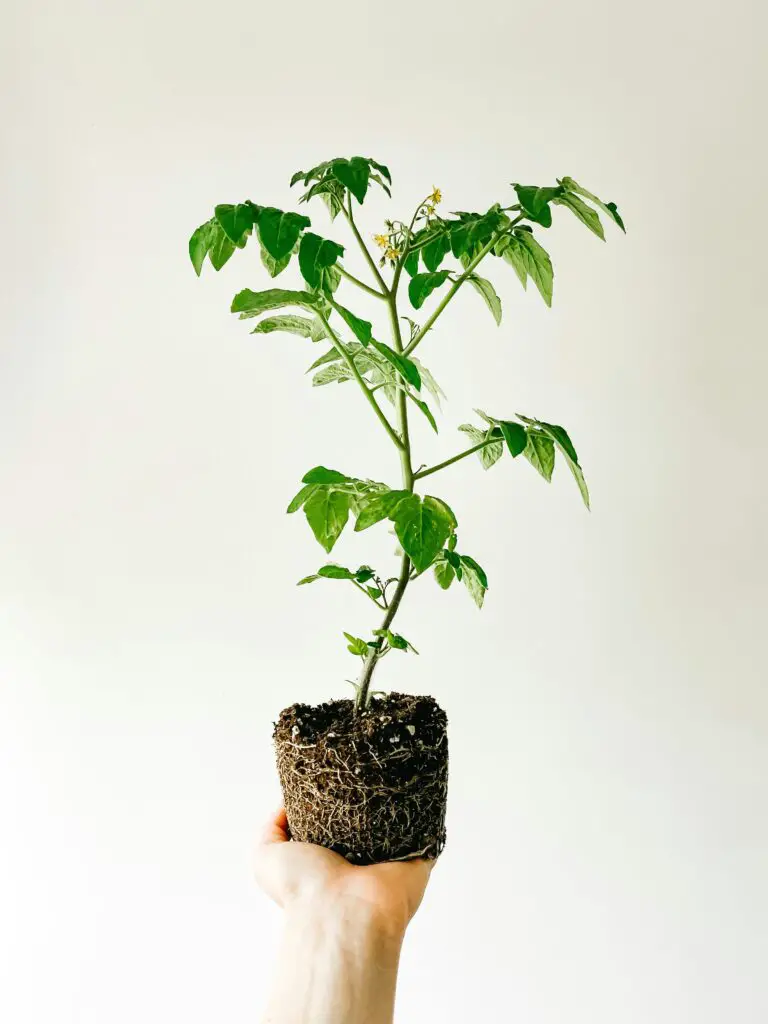
When it comes to watering, think of the Crassula’s ability to store water in its leaves as a lesson in resourcefulness. In many cultures, resourcefulness leads to prosperity, and so it is with these plants. Allow the soil to dry out between waterings, which teaches patience and the anticipation of nurturing growth. Too much water can lead to root rot, while too little is a test of resilience—a balance is the essence of success.
A real-life example that embodies the Crassula’s spirit is that of a busy individual who, despite a hectic schedule, ensures that their Crassula receives just the right amount of care. They make a point to check the soil’s moisture level, just as they would manage their time and resources—wisely and with intention. This dedication is what brings about a thriving plant that stands as a symbol of their ability to prosper amidst challenges.
The Crassula plant is not just a piece of décor; it is a life companion that echoes the values of growth and prosperity. In caring for a Crassula, you’re engaging in an active metaphor for nurturing success in your own life. By embodying the principles of Crassula care, you foster a growth mindset—both in your green companion and within yourself. Cultivate your Crassula with love and it will return the favor, blooming into a lush embodiment of the prosperity it symbolizes.
Incorporating Crassulas into Home and Garden
Crassulas, with their mesmerizing symmetry and lush jade tones, are more than just plants; they are living sculptures that infuse life into any space. If you’re intrigued by the idea of blending both aesthetics and symbolism into your home and garden, let’s explore some creative ideas for incorporating these succulent beauties and the meanings they carry.
Bringing Tranquility to Living Spaces
Consider the peaceful aura that a Crassula plant can bring to a room. Symbolizing prosperity and good luck, it becomes more than decor; it’s a green talisman for your living space. For a splash of serenity, nestle a Crassula ovata, commonly known as the Jade Plant, in a bright, sunlit corner of your living room or upon a bookshelf, where its plump leaves can catch the light and cast a fresh, vibrant energy.
Creating an Outdoor Oasis with Crassulas
Outdoors, Crassulas can transform a bland garden into an eclectic, succulent haven. These versatile plants thrive in rockeries or arid landscape designs, mimicking their native South African regions. Imagine a pathway lined with an assortment of Crassulas, each variety unfolding its unique story and texture, guiding you towards a tranquil seating area where the worries of the day can melt away amidst these symbols of resilience.
A Personal Touch: Crassula Bonsai
Why not elevate the art of Crassula growth by shaping it into a bonsai? Giving a nod to the Japanese tradition of contemplative gardening, training a Crassula into a bonsai form is a mindful pursuit that can adorn any indoor or alfresco setting. With careful pruning, you can coax these succulents to embody miniature tree-like forms, enhancing their symbolic meaning and creating a striking focal point.
For inspiration on this transformative journey, here’s a video to guide you through the first pruning of a Jade Plant with an aim to fashion it into a bonsai masterpiece:
Crassulas as Eco-friendly Gifts
If you’re looking for a gift that carries deep meaning and requires little upkeep, why not present a Crassula? Its symbolism of growth and wealth makes it a thoughtful and sustainable gift. Whether it’s a housewarming or a gesture to encourage a friend, a Crassula, with its stout leaves and tenacious nature, is a beautiful reminder of friendship and endurance.
Striking the Right Balance with Crassulas
Remember, the goal is harmony when integrating Crassula plants into your environment. Their meaning is amplified when they complement their surroundings, not compete with them. Pair them with other succulents or plants that share similar care requirements but differ in texture and color for a visually engaging and balanced composition. Each Crassula carries its own story, and by placing it thoughtfully within your space, you celebrate not only its beauty but also the ancient symbolism it represents.
Frequently Asked Questions
Ever wondered about the world of Crassula plants and what secrets their name might hold? Well, you’re in for a treat! This section digs into the common curiosities surrounding Crassulas and blossoms into a conversation on related topics that are sure to root out your interest.
What Does the Name ‘Crassula’ Signify?
Like a secret whispered among the leaves, the name ‘Crassula’ stems from the Latin word ‘crassus,’ which means thick or fat. And boy, do these plants live up to their name! With their plump, succulent leaves, they’re the epitome of what it means to be… well, ‘crassula-ted’. It’s like nature looked at these juicy leaves and said, “Let’s make them lush, let’s make them hefty, and let’s call it Crassula!”
How Did Crassula Plants Come into the Limelight?
Imagine having a robust little plant that’s not only a breeze to care for but also brings a dash of green pizzazz to any corner of your home. That’s Crassula for you! They trotted into the spotlight as one of the most cherished succulents, and with their fuss-free demeanor, they’ve become the darlings of plant parents worldwide. Crassula plants are like that hardy friend who thrives on just a high-five and some sunshine.
Why Are Crassula Plants Touted as Good Luck Charms?
In between tales of dragons and ancient ores, the Jade Plant, a Crassula family superstar, garnered fame as a beacon of good fortune. Often gifted as a lucky charm, it’s said to attract wealth – like a little green magnet to prosperity. Now, I’m not saying placing a Crassula by your window will guarantee a lottery win, but if myths hold any weight, they’re at least a sign that good vibes are en route!
For those who are visual learners and like to see these beauties in action, we’ve included a handy video that encapsulates the magic of Crassula plants and their care. Watch, enjoy, and perhaps learn a new thing or two about your soon-to-be favorite succulent!
From their chubby leaves to their symbol of abundance, Crassula plants carry a fascinating story woven into their very fabric. They’re not just another pretty face in the succulent crowd; they’re the plush, green mascots of prosperity and ease. So go ahead, give them a go and let the plush leaves of Crassula add a speck of luck and a splash of green to your life!

